Tuesdays at Number 10 - Appraisal and Reflection
18 02 20 13:28 Filed in: Other
Since we began to tell our family stories in September 2015, the day has changed from Wednesday to Tuesday, the world has changed and much has changed in our lives. Sage, Margaret’ s grandson has joined the family, all of Sue’s grandchildren are now at school, Margaret’s consuming interest is singing lessons and choir and Sue, having built a house with Jono, is now saving the grassland at Billy Goat Hill. Our children are busy in their lives, reaching or approaching milestones with zeros attached, and doing an excellent job of parenting the next generation In between all this they are finding time to explore their own interests. Last but not least, we are pleased that, in our 2020 photo, we do not look terribly much older than in 2015. Well, we think so anyway.
2015:
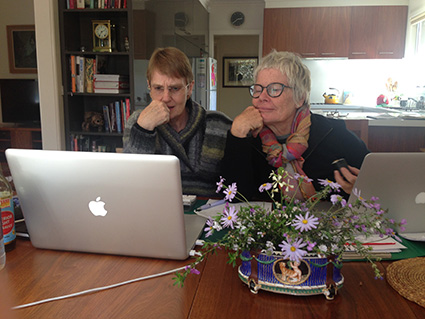
2020:

Some days we have a clear run at our work. Sitting at our computers, we spend four or five hours of concentrated writing, stopping only to confer about choice of photos, or leaping from useful website to relevant old document. This is rare!
Tuesday is one of the days Sue’s grandkids walk here straight from school. A tsunami of the day’s gripes, injuries, triumphs and challenges, told through mouthfuls of toasted cheese and chocolate, sweeps through our concentration.

It seems to be just minutes after we have finished telling each other our own stories of the week. The kids settle into after school activities and we are back to our computers finding our concentration. Some days there are three lots of tutoring going on in various corners of the house.
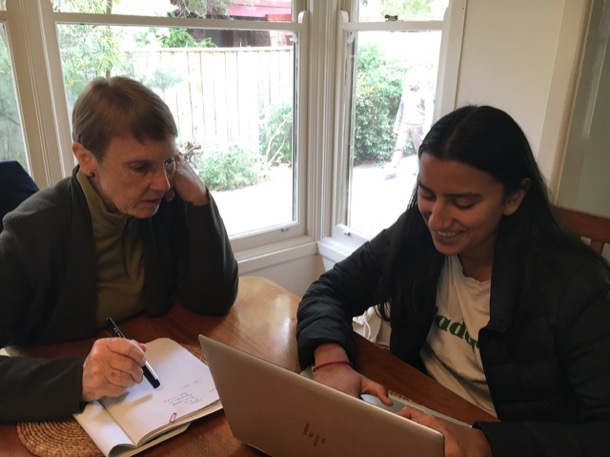
The phone seems to be constantly ringing. Cakes need to be made for a meeting tomorrow. Family members’ crises demand discussion, analysis, comfort, advice, admonishment, emergency dashes and cuddles. And throughout, tea must be made and drunk with due reverence.
When we began, we felt that we needed to post every week. We had spent so long planning and learning, and now, at last we were getting some material “out there”. The feedback was very positive, and it was such a buzz to press “publish” and see our work there on the internet.
We found that the few hours we had were not enough to write, find photos, set up the Soundcloud snippets, fiddle with the spacing and proof read. So we did homework, and came with long written passages.
That lasted a little while…
As the months and years rolled by, the frequency of posts decreased. In our defence, the posts got longer and more detailed… but in 2019, we did only three posts for the whole year! We plan to pick up our game … a bit!
In 2014, as we began the planning phase of our project, we decided that our story should be published in a digital form. Our initial concept was a website that would tell the family history, show connections through family trees and archive photographs and other information. Over a month or two, we brainstormed the concept, dredged up memories from the past and compared notes.
The research took us into the realms of website design and a whole new world. The website idea stretched us to the limit, as none of the formats available for purchase were flexible enough to meet our needs. Then the light bulb moment …… we could use the blog format. That way, we were not restricted to chronological order or tedious exploration of family trees. We could tell our shared family history One Story at a Time. So successful has the use of the blog format been, that we have hardly used other aspects of the website. Michael offered to host and caretake our website and is our tech support when all else fails. Thank you Michael.
Eventually we chose Rapid Weaver: the website format and style suited our purpose and it offered a blogging capacity. On-line tutorials followed and a steep learning curve. We are well pleased with our website choice and our decision in that light bulb moment to use the blog format. We have been free to follow stories, themes and lines of research across the centuries, telling one story at a time and building a picture of our family history both in Australia and sometimes in the countries from which those early immigrants came.
The impetus for this whole massive project was the responsibility of preserving Alice and Marge’s family history recordings and picking up from where they left off. Thus, the recordings have been one of the main sources of information. Before we began, I had spent a lot of days digitalising, ordering and summarising the five hours. This made them far more usable. Many of our posts use extracts from these recordings, sometimes just as a starting point, and sometimes as the basis for the whole post.
An example of a post we wrote based entirely around the recordings is “Great Great Grandparents” from November 18, 2015. There’s a hint of a little research in this post… we found out a bit about Bismarck, and a little about the flax industry in Ireland, but we took Alice and Marge’s remembered details as if that was all we could know about these people. Later, we were able to bring these people to life much more fully, and to learn much more about their lives.
We also have many original letters: chatty newsy letters, happy birthday letters, travelogues, love letters. We have only used these a few times, but, as an insight into the times and the lives of the people who wrote them, they are priceless.
One post we based entirely around our collection of letters, was October 14, 2015. “Twelfth Birthday Letters to Alice”. In the post, we used the letters written by Alf and Freda to explore these two very different personalities. We published photos of the letters but also transcribed them: old fashioned handwriting is not always easy to follow.
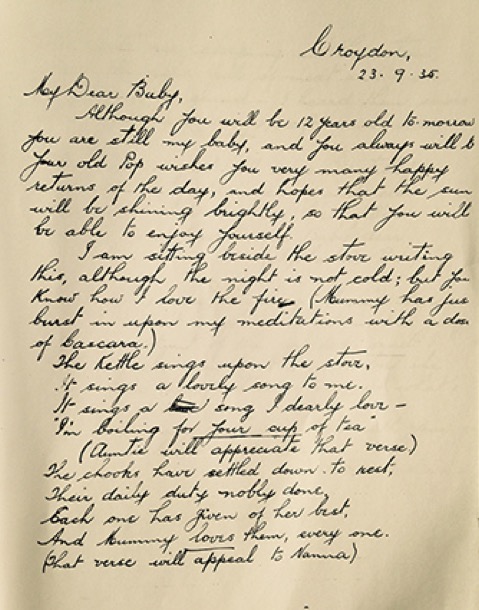
Family photos are a useful resource. Often they are stiff portraits, but even those show us something of the people and their environment.
There are also school reports and our grandfather’s teacher planning books. In “First year Teaching 1909”, published on November 4th 2015, we wrote about Alf’s life as a “pupil teacher” using pages from his planning book. At Katamatite State School, in 1909, he taught Reading, Proportion (Maths), History “The Invincible Armada”, Grammar “Complex Sentences” and “Drawing with Instruments”. Lessons were meticulously planned and commented on by the headmaster. All this is fascinating to the many family members who have become teachers themselves, in later years.

Recently we have been in contact again with our childhood friend, and in my case, ex husband, Fred. He, too, has become a retired person wanting to explore and record his past. Fred has been trawling through hours of analogue film, and painstakingly digitalising and restoring it. He has been very generous in sharing the results with us. We have only begun to share these bits and pieces through our blog, and already we have had some surprising results.
Most notably is “Poowong Footage” from August 29, 2018. The post explains what happened when we decided to share the precious film of a 1976 visit to our father and his second wife’s home, in Poowong. It resulted in renewed contact with Bev and her son Grant.
Fred at work:
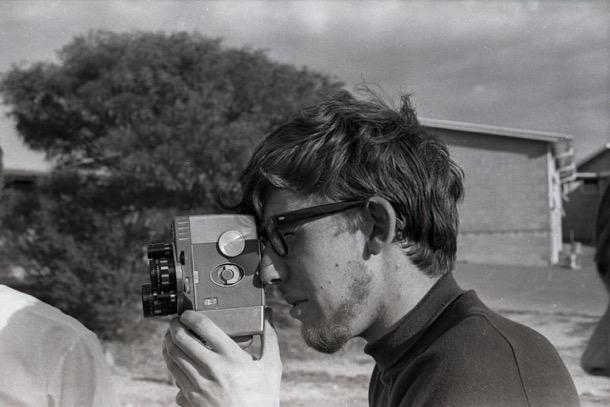
The most vast and useful resource has been the internet. It has yielded so much. Our favourite posts have been those that send us down an endless succession of rabbit holes, ranging widely through time and space. Along the way we have found suddenly that we are researching new territory. Sometimes, the jump-off point has been a story from Alice and Marge’s tapes, sometimes a skerrick of knowledge that we want to expand, sometimes just following the scent of the chase. A few of our favourite posts have been reporting on research that we have laboured over. The most notable of these is the Dau (Dow) Soldiers. (published on August 17, 2016)
We found these four great uncles, Frederick, Arthur, Charles and Wally by chance. We were exploring the seventeen children born to Martha and Joachim Dau of Heather Farm in Wandong. Our great grandmother had been one of those children.
Alice had mused about how there had been no war service in her wider family. And, when we had a sniff of these four soldiers, her father’s uncles, we were intrigued, initially about why she seemed to know nothing of them, and then about the four men themselves.
We researched two each, and spent many excited weeks ploughing through war memorial records, sharing “aha" moments, staring at grainy photos, reminding ourselves of the muddy and bloody battle sites of 1914-18.
When we finally wrote the post, telling the four men’s stories, it was with a sense of loss, like leaving behind new friends.
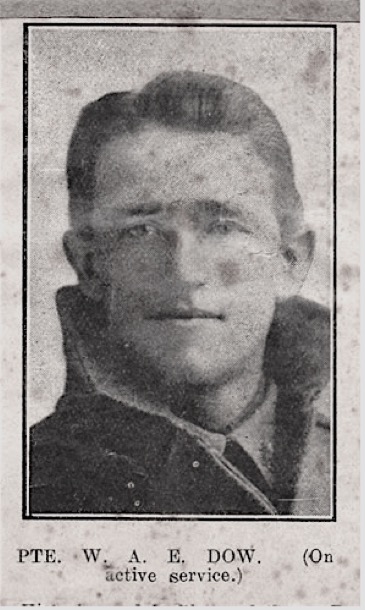
We knew a bit about the Pakenham Bourkes, (published on April 19, June 07 and July 05, 2017). Indeed, we had been to a reunion of the descendants of Michael and Catherine at the Pakenham Racecourse. In our research we found ships’ records, relevant letters from Governor Bourke and actual dates of where and when the family travelled and settled in what is now Pakenham. We faced the realisation that our great, great grandfather had probably physically chased the original Aboriginal inhabitants from his selection. Until we began digging, we had no idea of the scale of influence the family had had on the development of Pakenham. But actually seeing the number and prominence of the Bourke graves in the Pakenham cemetery brought it alive for us. We spent a day driving to the sites we had read about: the creek where Catherine and the children sheltered from a bushfire, the several historic homesteads, the preserved ruins of the original Bourke’s hotel chimney, the racecourse itself. Our excursion to Pakenham gave us a sense of connection to them.

Another example of an excursion we enjoyed was our walk to school. (October 26, 2016) We parked outside our childhood home and set off round the corner and through the familiar streets. So many houses and gardens seemed unchanged in leafy Box Hill South. To us, as children, the long walk across the creek had been wild, weedy, always too hot, too cold or too wet. In 2016 we found it a precious wild place in suburban Burwood, a much used off-the-leash dog walking area, and the larger backyard of Deakin University.
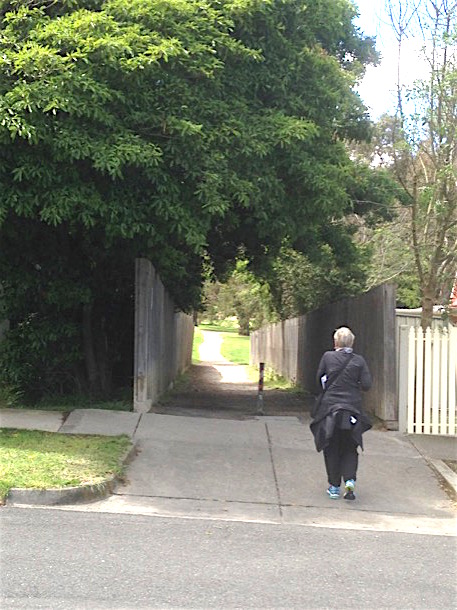
In “The Croydon Years” (published June 20, 2018) we traced our mother and aunt’s walk to school. The tapes had been a wealth of information about the Coates’ life at Croydon during The Great Depression of the 1930s. The Croydon museum gave us access to many photos and fleshed out the stories for us. But it was walking the streets and watching the kids playing the school grounds that made it come to life. Our musings over coffee, and in the car as we drove around looking for landmarks, filled in the gaps.
Our choice of topic has been fairly random… an idea would develop from a photograph, the time of year, a brainstorm. The balance between the minutiae of one person’s life and the exploration of grand ideas of our own time and that of our forebears, has developed apparently on its own. To illustrate this span we can take another look at two posts: “Auntie Bert, a sterling character”, published on March 12, 2019, tells the story of our great aunt, a single lady who played a big role in our lives, in fact in the lives of the whole family. In this post, our exploration of her life, and her generation as a whole, is largely based on Alice and Marge’s recollections. It focusses on one person’s life.
On the other hand, the exploration of political protest in our lives and that of our parents, crosses the generations and the decades. This was our “How to Rescue the World” (December 16, 2015). Approaching an overview topic like this gave us an insight into patterns that we were only dimly aware of. You could sum up the many, many issues that have fired up this family under the headings of the environment and social justice. Some battles we have fought many times, and they remain to be fought well into the future.
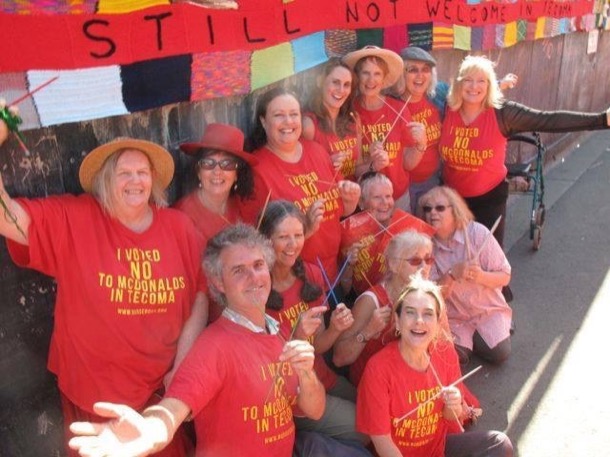
Over two hundred and forty days, and one thousand nine hundred and twenty cups of tea and coffee, we have published between forty to fifty posts.Our initial concept of a free form blog has been flexible for us to be able to explore the historical context of our stories.
On looking at our posts we are really pleased that we have been able in many cases to give a picture of the times in which the stories occurred and place them in an historical context. The post, ‘Cut out of the Will, (June 15th 2016), is a good example, We told the story of our parent’s wedding in the context of Protestant Catholic divide. Our father, a Catholic had to leave the Roman Catholic Church in order to marry our Protestant mother. This was an unusual occurrence, and one that brought with it both grief and anger. Dad’s sister begged him to not split the family and to ‘get married properly’ and his father cut him from the will. Hugh’s will names only two children when in fact there were three, our father being the third.
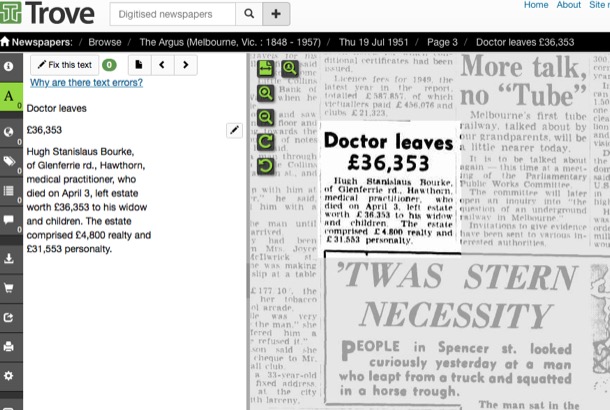
Another aim was to flesh out the lives of our forbears, about whom we knew little, and to give a glimpse of the very different worlds in which they lived. Because of the family divide, we knew very little of our father’s mother Grace McCormack. We discovered her birthplace was Molesworth, not Casterton, and through newspaper records of everything from cattle sales and property purchases, to society weddings, we were able to piece together a picture of her life. We even managed to take a photograph of the house in which she was born, Balham Hill, at Molesworth, (Grace McCormack, our other grandmother, May 25th, 2016)

We were inspired by Alice’s decade by decade analysis of the history she had lived through. On April 4th, 2018, we attempted to pick up the task, from 1950, where Alice finished, and take the process through to 1980. This was a very overt way of fitting our story into the greater story of our generation. We found, as Alice had, that we were able to find the “flavour” of each decade, and look at our own lives with that framework.
The finished post thus takes every decade from 1850 through to 1980, a vast sweep of Australian history, and places within it the individual and collective lives of our family.
We have found the research and telling of the historical context particularly fascinating and hope that it will give current and successive generations an historical context and a sense of their place in history. We are also pleased with our website choice and our decision to use the blog format. We have not been restrained by having to use historical order or follow the structure of the family trees. Consequently we have gone where curiosity and interest has led us. It has been a delight and a pleasure, full of fun and challenge.

blog comments powered by Disqus
